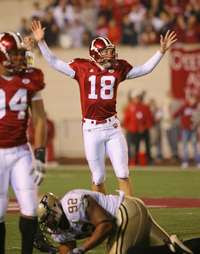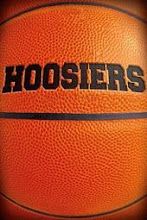
Norman Mailer died Saturday, November 11, 2007 in New York City at the age of 84.
He probably would not have wanted an old man's death. He would most likely have liked it to have gone another way - an accident or a bar fight, a lover's brawl, or perhaps at the
White Horse Tavern, the Geenwich Village bar where another gifted writer, the poet Dylan Thomas, literally drank himself to death. Mailer was as renowned for hard living, womanising and fist-fights as he was for his literary works. He had nine children by six wives, including one who he stabbed, nearly fatally, in a drunken fight at a party; he also bit off part of the ear of actor Rip Torn.
His career took in other such bizarre events as running for mayor of New York City in attempt to make his beloved city the 51st state. During the 60's and 70's Mailer was one of the leaders of "hipsterdom" in New York; dabbling in avant-garde culture, black power, drugs - he was also co-founder of the alternative newspaper the
Village Voice.
While many would have predicted a much more flamboyant demise, unlike his hero Ernest Hemingway; Mailer, the giant of American literature and one of English Language's most gifted writers, died of renal failure in a New York hosptial bed. A few month earlier he had an operation on his lungs to remove scar tissue.
Each year in my hometown of the Indianapolis - Marion County Public Library has sponsored the Marian McFadden Memorial Lecture series; an annual presentation that has hosted such notables as Norman Mailer, John Irving, Judy Blume, Maurice Sendak, Margaret Atwood and John Updike, Saul Bellow and most recently Kurt Vonnugut Jr's son, Mark, who presented the very speech his late father had planned to deliver at this year's 30th anniversary of the McFadden lecture series.
This yearly lecture was established after the Library Foundation received a gift from the estate of Marian McFadden, Director of Public Libraries from 1945-1956. The lecture typically occurs in the Spring and has been offered free to the public since 1978.
I was fortunate enough to meet Norman Mailer at the end of his lecture in probably 1979. My mother, who instilled in me and my brother, and later my son a love of books and reading, wanted to attend this lecture due to her affection for Mailer's works. I recall the lecture being serious, funny, cynical, political as well as deeply intellectual; Mailer talked much about Gary Gilmore, the central figure in the book he was finishing that went on to win the 1979 Pulitizer Prize;
The Executioner's Song. This novel was based upon a true story of the double murderer from Utah, Gary Gilmore. Gilmore was the first person executed in the US after the re-instatement of the death penalty in 1976. He made famous the line "let's do it" when he faced his executioner.
My late mother took with her a small 5" x 6" red textile copy of "The Naked and the Dead" (1948) the World War II novel, set in the Pacific, inspired by his experiences as a soldier that made Mailer famous at the age of 25. After the lecture, Mailer stood at the edge of the stage at North Cental High School and talked with a small group of people who had gathered to greet him.
I escorted my mother up the steps on the left side of the stage and Mailer immediately made eye-contact and smiled at my mother as she stood in the circle of probably 8 - 10 people. He quietly acknowledged her and said "hello" and my mother said she loved his novels and asked if he would he be so kind as to sign the book she had brought. He genuinely seemed touched and said "I would love to, what is you name dear". My mother replied Marie and he took out a black cartridge pen and wrote inside the front cover "Best Wishes Marie, Cheers, Norman Mailer". We both shook his hand, relayed our thanks and departed the stage. My brother now has the book in his personal collection.
Several years later my wife and I honeymooned in Provincetown, where Mailer's spent much of his time and was a pillar of the community. Considered an eccentric and outcast in many circles, when in Provincetown he could be himself; the hard-fighting, serial-marrying and Pulitzer Prize winning Mailer played in the town poker tournament, gave numerous readings in support of the Fine Arts Work Center and the local library, and helped raise money to build the town's first theater in nearly three decades.
Mailer's love affair with
Provincetown began on a 1943 visit while he was a student at Harvard University, according to J. Michael Lennon, his longtime editor, archivist and friend. Mailer loved the 18th century white clapboard houses in Provincetown as much as he liked the artists, merchants and fisherman who occupied them.
For 60 years he would return to Provincetown, where he bought a brick house overlooking the bay living with his sixth wife of 32 years, Norris Church Mailer. To Mailer, according to Lennon, "Provincetown was the perfect place to write, a place with all the bohemian charm of Greenwich Village without the noise and distraction".
Lennon has gone on to say "he became a fixture in town, everybody knew him, he'd walk down the street to buy a newspaper and wave to people and stop to chat". In his younger days, he would walk the dunes during the day, write late into the night and hold court on the back porch of his home as the sun and into the horizon.
"He choose to live in a small town at the edge of the continent, but he was at the center of the nation's political and social discourse, whether he was taking on the war in Iraq or taking on Adolf Hitler", said friend Seth Rolbein, editor of the Cape Cod voice.
"In his final days, assisted by two canes, Mailer would walk the quarter mile from his home to his favorite resturant, Michael Shay's, order two dozen Wellfleet oysters and take the shells home to ponder them, discerning the face of a Greek warrior in on or a sun goddess in another".
"He had deep blue eyes" said owner Shay Santos, "and when you had a conversation with him, you knew you had his full attention".
The photo I selected to place on this entry is quite similar to the way he looked the night I met him in Indianapolis. I am very happy to have had the opportunity to hear Norman Mailer speak his thoughts in a setting such as this; I am even luckier to have had the chance to make eye contact into those deep blue eyes for just a moment in time, and shake the hand of one of our great literary contributors.









